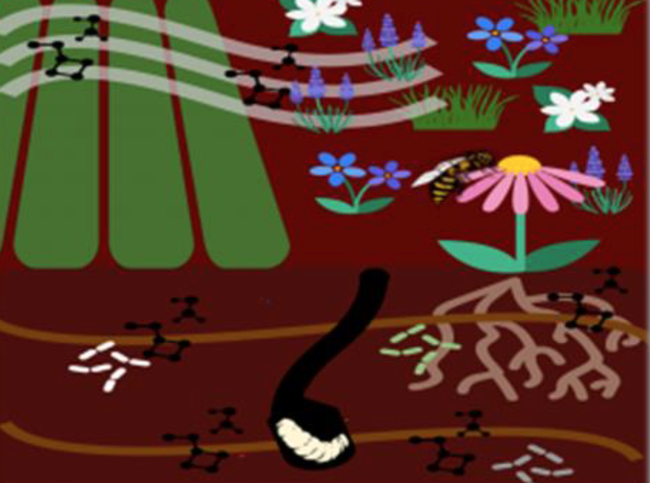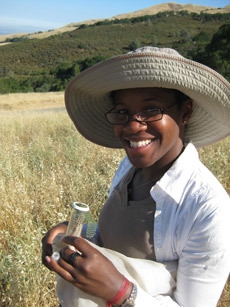- Author: Kathy Keatley Garvey

The event, titled “Bugs in Ag: What Is Eating Our Crops and What Is Eating Them?” will take place from 1 to 4 p.m. in Room 1124 of the Academic Surge Building on Crocker Lane. It is free and open to the public.
The open house will focus on the expertise of Cooperative Extension specialist Ian Grettenberger of the UC Davis Department of Entomology and Nematology, who researches pests of rice and alfalfa, among other crops. He and postdoctoral fellow Buddhi Achhami of the Grettenberger lab will be displaying tadpole shrimp (crustaceans), alfalfa weevils, aphids and other pests, and will field questions.
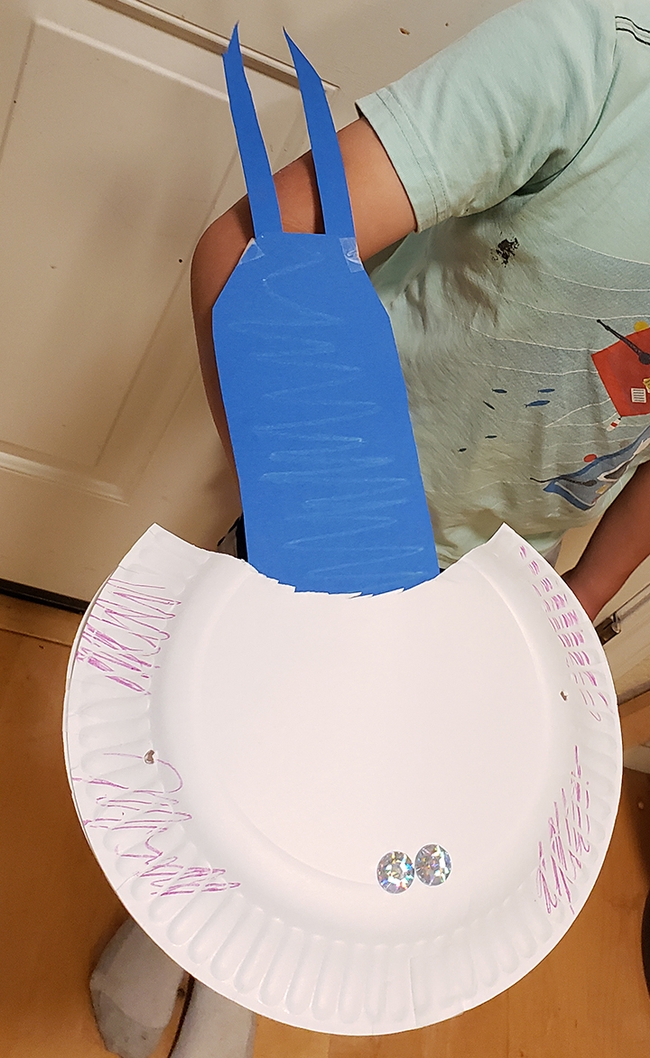
Grettenberger will display newly hatched tadpole shrimp. Guests will be able to view the pests under a microscope. He also plans to show small rice plants, which “look like grass in water.”
The family art activity will be to make tadpole shrimp hats or puppets and provide "googly eyes" to imitate the compound eyes and and the naupliar ocellus, according to Tabatha Yang, the Bohart Museum education and outreach coordinator. Tadpole shrimp, from genus of Triops, belong to the order Notostraca (tadpole shrimp). The name Triops originates from two Greek words meaning "three" and "eye.”
The Bohart Museum, directed by Lynn Kimsey, UC Davis distinguished professor of entomology, houses a global collection of eight million insect specimens; a live "petting zoo" comprised of Madagascar hissing cockroaches, walking sticks (stick insects) and tarantulas; and a year-around gift shop (also online) stocked with insect-themed gifts, such as t-shirts, hooded sweatshirts, posters, jewelry, books, puppets, candy and collecting equipment.
The Bohart Museum has been closed to the public for the last two years due to COVID-19 pandemic precautions. The Bohart observed UC Davis Picnic Day by setting up displays in the hallway of the Academic Surge Building. This spring the museum is open to the public, but groups must make reservations and everyone must follow the UC Davis visitor guidelines: https://campusready.ucdavis.edu/visitors?. The museum's "visiting us" page includes more information.
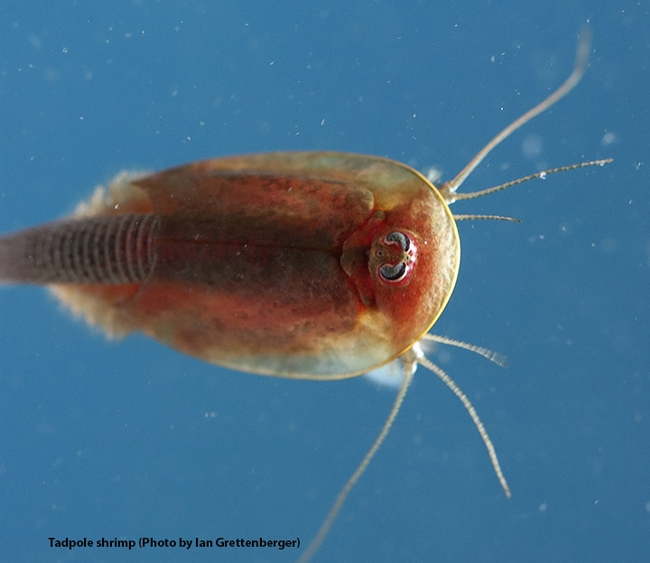
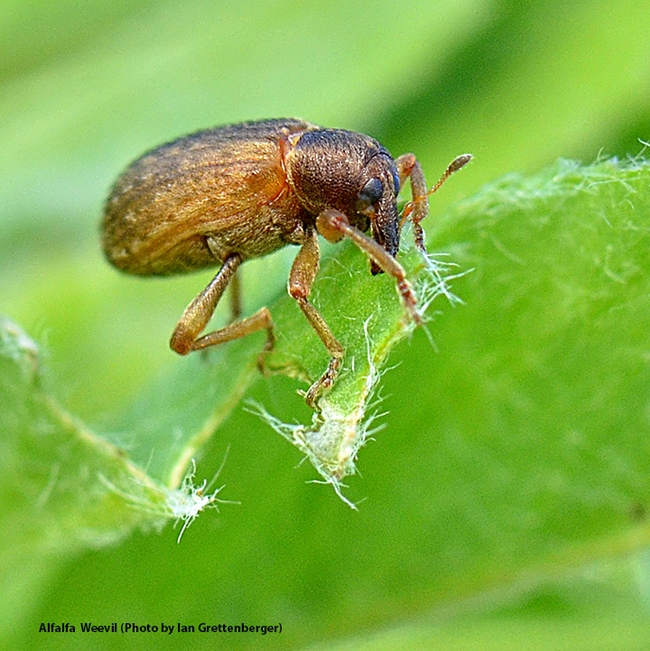
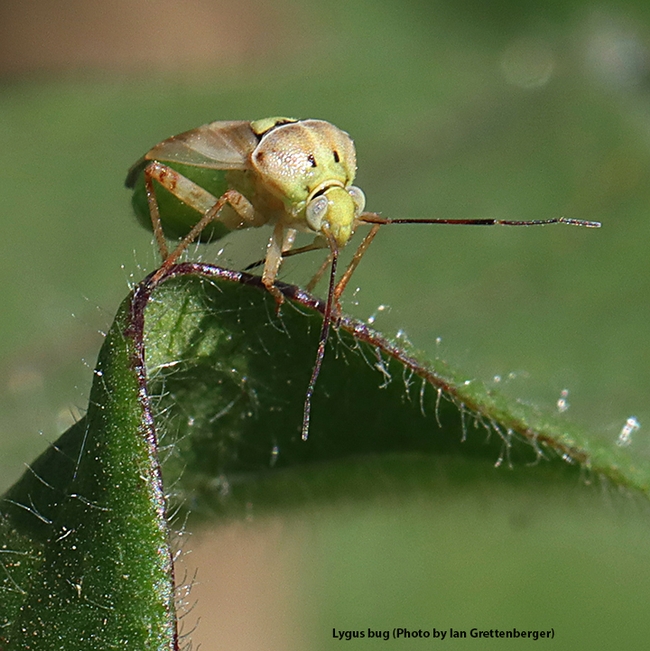
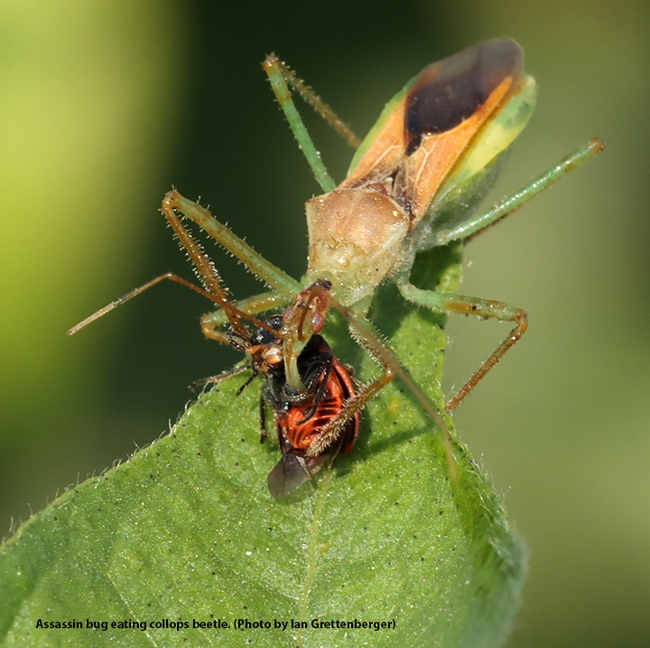
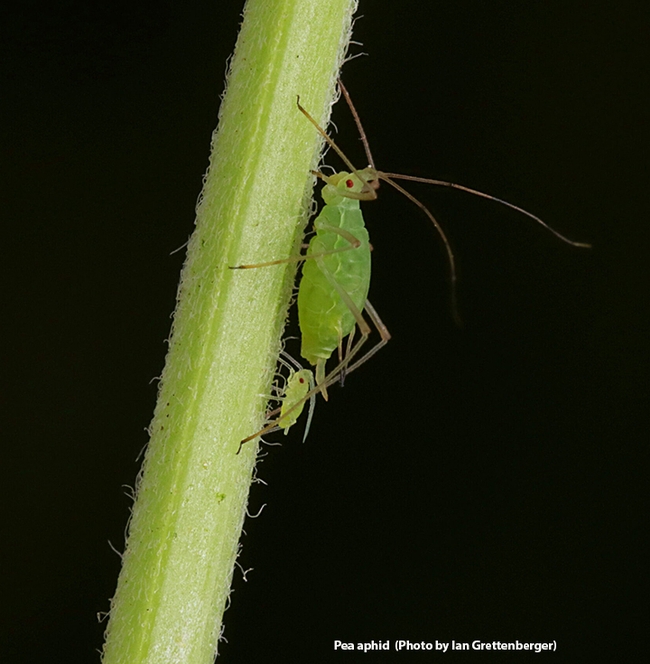
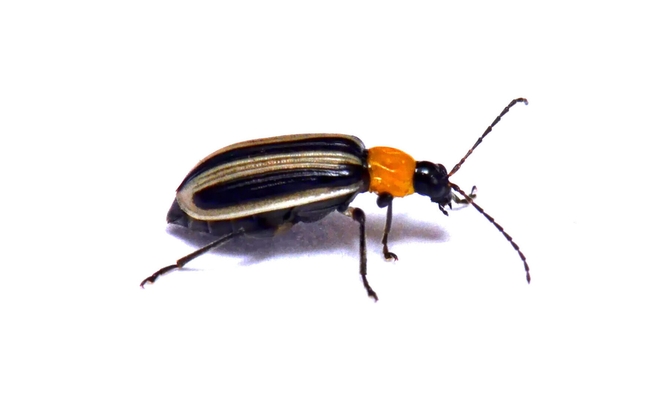
- Author: Kathy Keatley Garvey

Saturday, May 28, 1 to 4 p,m.
Open house, "Bugs in Ag: What Is Eating Our Crops and What Is Eating Them?"
Cooperative Extension specialist and agricultural entomologist Ian Grettenberger of the UC Davis Department of Entomology and Nematology faculty will explore the relationships between insects and agriculture. His areas of expertise include field crops; vegetable crops; insects, mites and other arthropods affecting plants; biological control of pests affecting plants; and beneficial insects. Grettenberger, who joined the UC Davis faculty in January 2019, targets a wide variety of pests, including western spotted and striped cucumber, beetles, armyworms, bagrada bugs, alfalfa weevils, aphids, and thrips.
Saturday June 25, 1 to 4 p.m.
Open house, "Eight-Legged Encounters"
This event is all about arachnids featuring scientists from across the country. It is in collaboration with the American Arachnological Society's 2022 meeting, scheduled June 26-30 on the UC Davis campus. The annual meeting will be hosted by two UC Davis arachnologists: Jason Bond, the Evert and Marion Schlinger Endowed Chair in Insect Systematics, UC Davis Department of Entomology and Nematology, and associate dean, College of Agricultural and Environmental Sciences, and Joel Ledford, assistant professor of teaching, Department of Plant Biology, College of Biological Sciences.
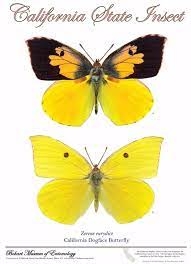
Public event to be held in California Hall for arachnid novices and experts alike. This is in collaboration with the American Arachnological Society's meeting at UC Davis.
Saturday, July 16, 1 to 4 p.m.
"Celebrating 50 Years of the Dogface Butterfly:California's State Insect"
Scientists and the public will celebrate the 50th anniversary of the California State Legislature' designation of the dogface butterfly as the state insect.
Folsom Lake College professor and Bohart scientist Fran Keller, and Bohart associate Greg Karofelas, a volunteer docent for the Placer Land Trust's dogface butterfly tours, will on hand to discuss the butterfly. The California dogface butterfly, Zerene eurydice, is found only in California. It thrives in the 40-acre Shutamul Bear River Preserve near Auburn, Placer County. The preserve, part of the Placer Land Trust, is closed to the public except for specially arranged tours.
Keller is the author of 35-page children's book, The Story of the Dogface Butterfly, with photos by Keller and Kareofelas, and illustrations by former UC Davis student Laine Bauer. Kareofelas' images include the life cycle of the dogface butterfly that he reared. Keller holds a doctorate in entomology from UC Davis, where she studied with major professor Lynn Kimsey, director of the Bohart and UC Davis distinguished professor of entomology.
Kareofelas and Keller also teamed to create a dogface butterfly poster of the male and female. Both the book and the poster are available online from the the Bohart Museum of Entomology gift shop.
California legislators adopted the dogface butterfly as the official state insect on July 28, 1972. But as early as 1929, entomologists had already singled it out as their choice for state insect. Their suggestion appears in the California Blue Book, published by the State Legislature in 1929. (Read more on how the butterfly became the state insect under the Ronald Reagan administration.)
The dogface butterfly is so named because the wings of the male appear to be a silhouette of a poodle. It is also known as "the flying pansy."
Bohart Museum. The Bohart Museum is the home of a worldwide collection of eight million insect specimens, plus a gift shop and a live "petting zoo," comprised of Madagascar hissing cockroaches, stick insects and tarantulas.
Bohart Museum Contact information:
https://bohart.ucdavis.edu/
(530) 752-0493
bmuseum@ucdavis.edu

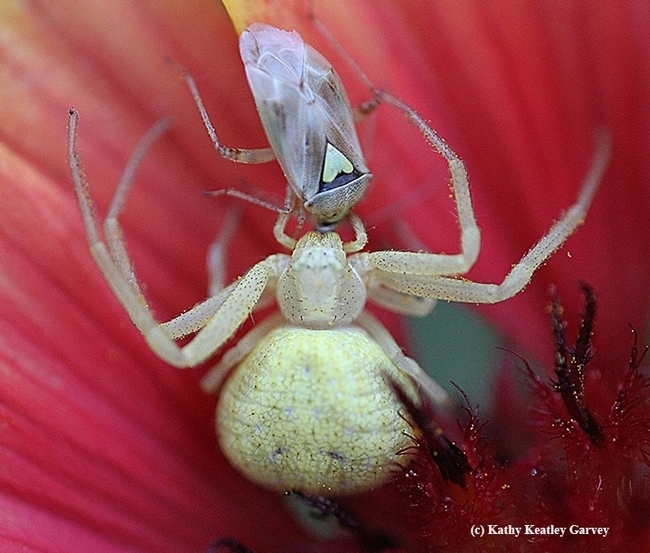
- Author: Kathy Keatley Garvey

Grettenberger's project, "Assessing a Biocontrol System for the Management of Tadpole Shrimp in Rice," is one of 10 research grants sharing $3.75 million meant to explore integrated pest management (IPM) tools for urban, non-agricultural and agricultural pest management, according to DPR Director Julie Henderson.
The grant program, funded by the state budget, represents a 617 percent increase from the previous year's funding. In the last decade, DPR has awarded $9,702,819 in research grants.
The grant projects "are critical to developing and expanding innovative practices and biological, non-chemical and physical tools to manage pests in agriculture, urban and other non-agricultural communities,” said Henderson. “The research will support the state's work to accelerate a systemwide transition to safer, more sustainable pest management and better protect human health and the environment.”
"Tadpole shrimp usefully eat some early season weeds but can cause damage to rice later in their life cycle," Grettenberger noted. "To preserve their role in controlling weeds but diminish the shrimp's later impact on the rice harvest, predator mosquito fish will be introduced mid-season to control the shrimp's population when necessary."
The 10 projects comprise two areas of research:
- Research projects funded for urban and agriculture pest management
- Research projects funded for urban and nonagricultural pest management
Grettenberger, who joined the Department of Entomology and Nematology faculty in January 2019, received his bachelor of science degree in biology, with an ecology, evolution and organismal emphasis in 2009 from Western Washington University, Bellingham, Wash., and his doctorate in entomology in 2015 from Pennsylvania State University, State College, Pa. He served as a postdoctoral researcher in the Godfrey lab and later, in the Frank Zalom lab.
His fields of expertise include field and vegetable crops; integrated pest management; applied insect ecology, and biological control of pests.
The California Department of Pesticide Regulation aims to protect human health and the environment "by fostering safer and sustainable pest management practices and operating a robust regulatory system to evaluate and register pesticides and monitor and regulate their sale and use across the state." (See more information about DPR.)
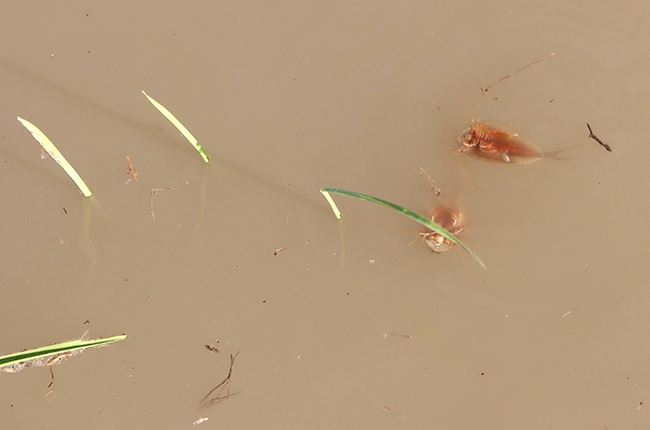

- Author: Kathy Keatley Garvey
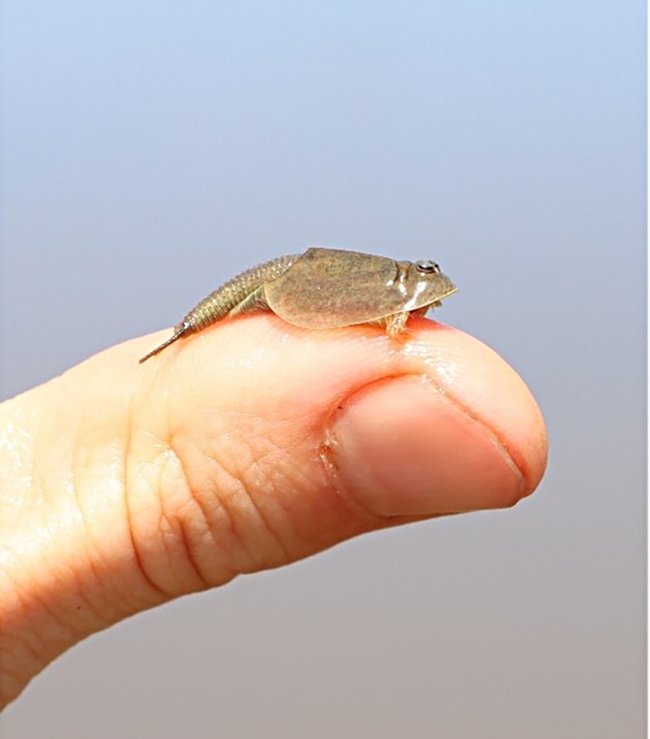
Agricultural entomologist and Cooperative Extension specialist Ian Grettenberger of the UC Davis Department of Entomology and Nematology and his colleagues propose alternative management.
Grettenberger's poster, “Past Pyrethroids: Alternative Management Approaches for Tadpole Shrimp in Rice,” presented at Entomological Society of America meeting (Oct. 31-Nov. 3) in Denver, offers non-pesticide alternatives, including the use of mosquitofish.
Collaborative research with UCCE Butte County director and Rice Farming Systems Advisor Luis Espino and UC Davis staff research associate Kevin Goding, indicates that mosquitofish proved able to suppress shrimp populations.
“Tadpole shrimp (Triops longicaudatus) are an early-season pest in California rice,” Grettenberger explained in his abstract. “Soon after flooding, eggs hatch and growing shrimp are soon large enough to damage germinating rice seedlings. Currently, pyrethroid insecticides are heavily relied upon for management, as they are in many cropping systems, because of their efficacy and low cost. However, contamination of surface waters is a concern, as is insecticide resistance.”
"We evaluated alternative management strategies that could be used to manage tadpole shrimp,” he wrote. “We tested a number of materials using small metal ring plots and natural shrimp populations. This included several timings of applications to mimic an early, more proactive application along with a later, rescue application, as well as reduced rates of a number of insecticides.”

Deep Look Video. Tadpole shrimp recently made the national news in two ways, Grettenberger said. First, they made news with the sudden appearance of tadpole shrimp following monsoon rains this summer in an ancient ceremonial ball court at the Wupatki National Monument in northern Arizona (https://www.livescience.com/dinosaur-shrimp-emerge-arizona). In October, KQED's Deep Look released a new video, “Tadpole Shrimp Are Coming For Your Rice," the work of lead producer and cinematographer Josh Cassidy and other members of the Deep Look crew. (See https://youtu.be/T2xnXaX7r3g.) Grettenberger assisted with the project, providing tadpole shrimp and taking some of the video clips used in the five-minute video.
“Much of his shooting was in my garage,” the UC Davis entomologist said, “so I get to see just how much effort and care goes into producing these videos. They end up pretty short, but that doesn't mean it is simple to get all the pieces together.”
“This tadpole shrimp is coming for your rice,” the narrator said. “Hungry hordes of them find their way into the ice fields of California's Central Valley and go to town munching on the young seedlings. But where did they come from, with the ocean so far away? A couple of weeks ago, this was just a dry dusty field. Turns out they were here all along.”
Deep Look referred to them as “time travelers,” as the eggs of shrimp tadpoles can be viable for decades and hatch when the rice growers flood their fields. "At the very least, they have survived as eggs since last season," Grettenberger noted.
The pests are neither tadpoles or shrimp but are fresh-water crustaceans descended from the ocean. “They look like tiny horseshoe crabs,” Grettenberger told Deep Look. “It's obvious when rice fields have lots of tadpole shrimp in them, because they stir up the mud making the water look a bit like chocolate milk. There will also be shrimp zooming around, many upside down at the surface, popping up for a few seconds before disappearing back into the murkiness."
Adult tadpole shrimp cannot survive when the soil dries out. But Grettenberger said their eggs have a rugged outer layer called a “chorion” that protects the eggs from desiccation.
“They've been living this way for hundreds of millions of years-- since before the dinosaurs-- waiting out droughts, changing climates, even global catastrophes,” KQED relates in the video. “In a world where the future is unpredictable, tadpole shrimp are the ultimate survivors.”
Grettenberger, who joined the UC Davis Department of Entomology faculty in January, 2019, focuses his research on field and vegetable crops; integrated pest management; applied insect ecology; and biological control of pests.
Additional Information:
- Resource on tadpole shrimp, UC Statewide Integrated Pest Management Program (co-authors, the late Larry Godfrey, UC Davis Department of Entomology and Nematology; Luis Espino, UC Cooperative Extension; and Sharon Lawler, UC Davis Department of Entomology and Nematology
- "Effect of Rice Winter Cultural Management Practices on the Size of the Hatching Population of Triops longicaudatus (Notostraca:Triopsidae) in California Rice Fields" (Co-authors Larry Godfrey,
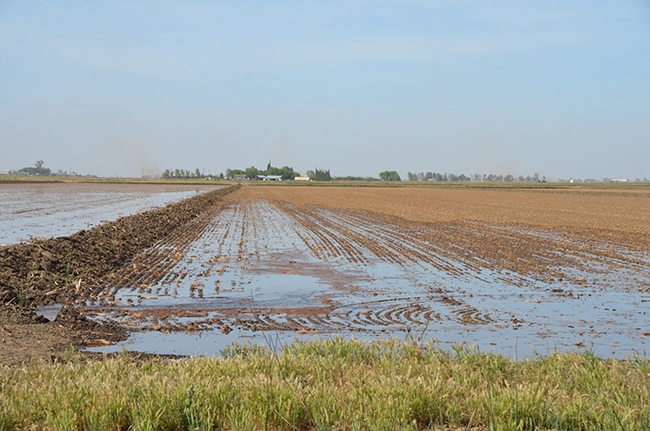
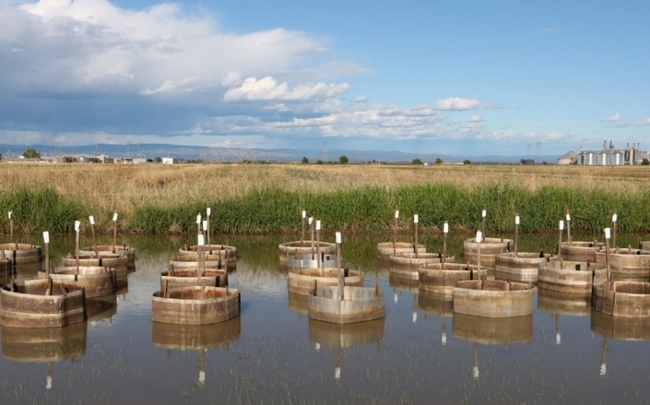

- Author: Kathy Keatley Garvey
Pollination ecologist Alexandra Harmon-Threatt, an associate professor at the University of Illinois, Urbana-Champaign, will speak on "Beyond Flowers; Examining the Role of Soils in Bee Conservation Efforts" at the next UC Davis Department of Entomology and Nematology seminar.
The online seminar, the last of the spring quarter, is set for 4:10 p.m., Wednesday, June 2. Host is pollination ecologist and professor Neal Williams. Access the Zoom link here.
More than 80 percent of bees nest below ground and most univoltine species spend more than 90 percent of their life cycle in contact with soils, Harmon-Threatt points out. "Yet most conservation efforts ignore soils and few research studies consider these critical life stages and possible exposures that occur during them. In a series of studies, our lab has begun to explore how much soils matter and whether ignoring them is to the detriment of conservation."
In her research, Harmon-Threatt zeroes in on understanding the patterns and processes that govern plant-pollinator interactions for conservation. "Pollinators play a vital role in plant reproduction, food production and ecosystem stability but are believed to be declining globally," she says. Her work focuses on identifying and understanding patterns in natural environments to help conserve and restore pollinator diversity. With a particular focus on bees, she investigates how a number of factors at both the local and landscape scale, including plant diversity, isolation and bee characteristics, effect bee diversity in local communities.
Harmon-Threatt received her doctorate from UC Berkeley, where she worked on bumble bee preferences and phylogenetic patterns. She completed a National Science Foundation postdoctoral fellowship in biology at Washington University in St. Louis.
She was recently featured on the podcast, People Behind the Science. Any change in pollinator populations, she told her audience, can have significant effects on natural and agricultural communities. Recent declines in bee populations, in particular, indicate how "little we know about these important insects in their natural environments, she told her audience."
Cooperative Extension specialist Ian Grettenberger, coordinator of the spring seminars, e may be reached at imgrettenberger@ucdavis.edu for any technical issues.
